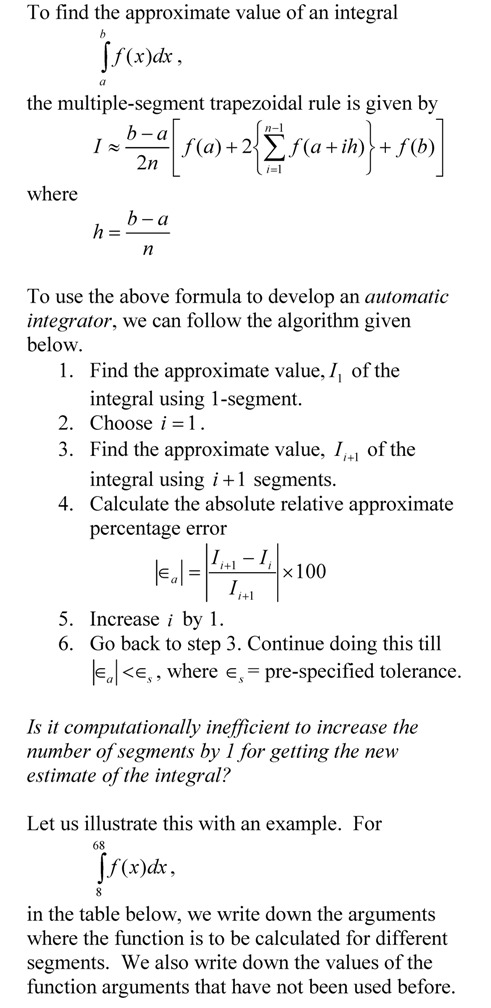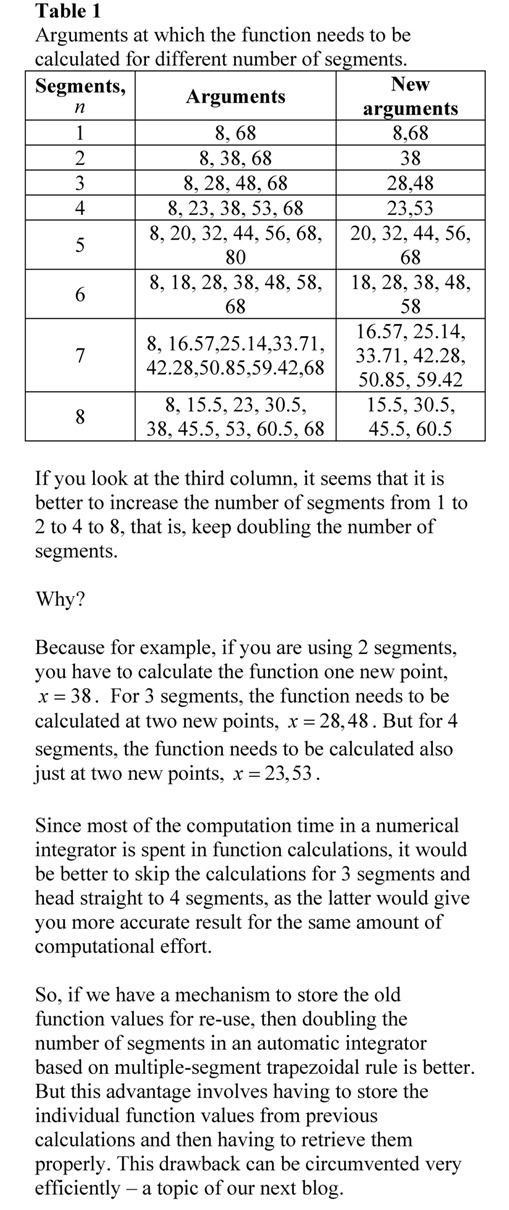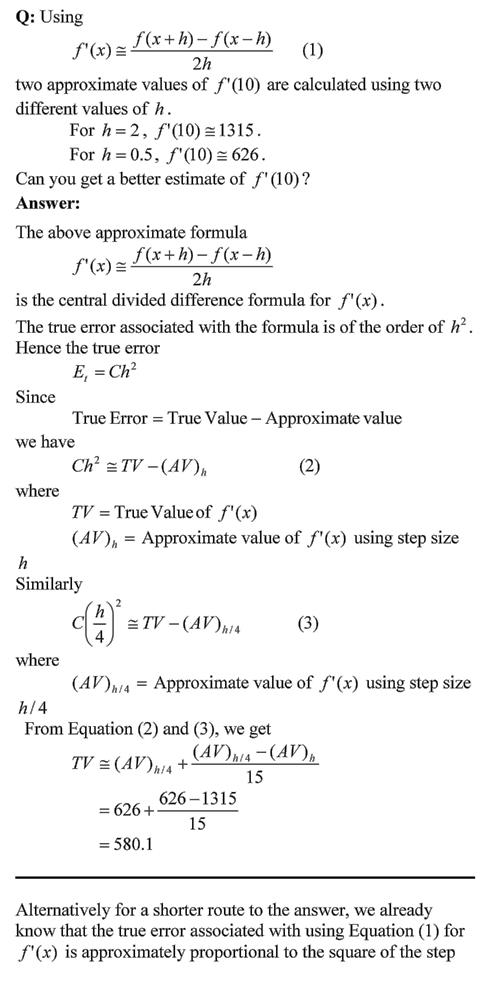In the previous post, we discussed why doubling the number of segments in the automatic integrator based on multiple-segment trapezoidal rule is more efficient than increasing the number of segments one at a time. But this advantage involves having to store the individual function values from previous calculations and then having to retrieve them properly. This drawback can be circumvented very efficiently as explained below. What you will see is that there is no need to store individual function values.
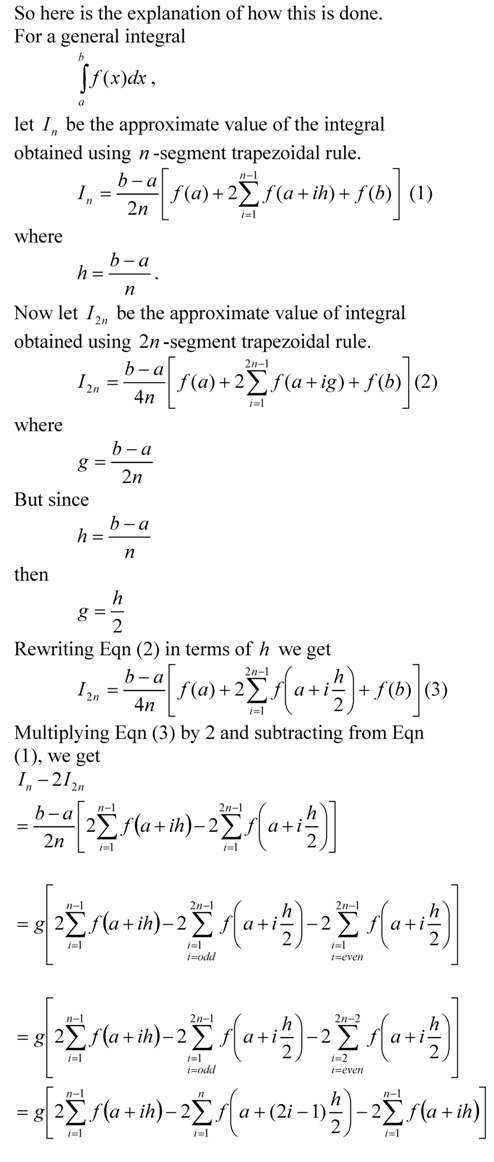
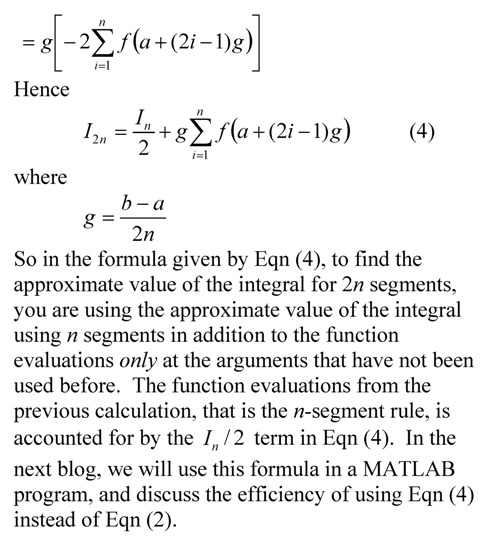
This post is brought to you by Holistic Numerical Methods: Numerical Methods for the STEM undergraduate at http://nm.mathforcollege.com, the textbook on Numerical Methods with Applications available from the lulu storefront, and the YouTube video lectures available at http://www.youtube.com/numericalmethodsguy.
Subscribe to the blog via a reader or email to stay updated with this blog. Let the information follow you.
